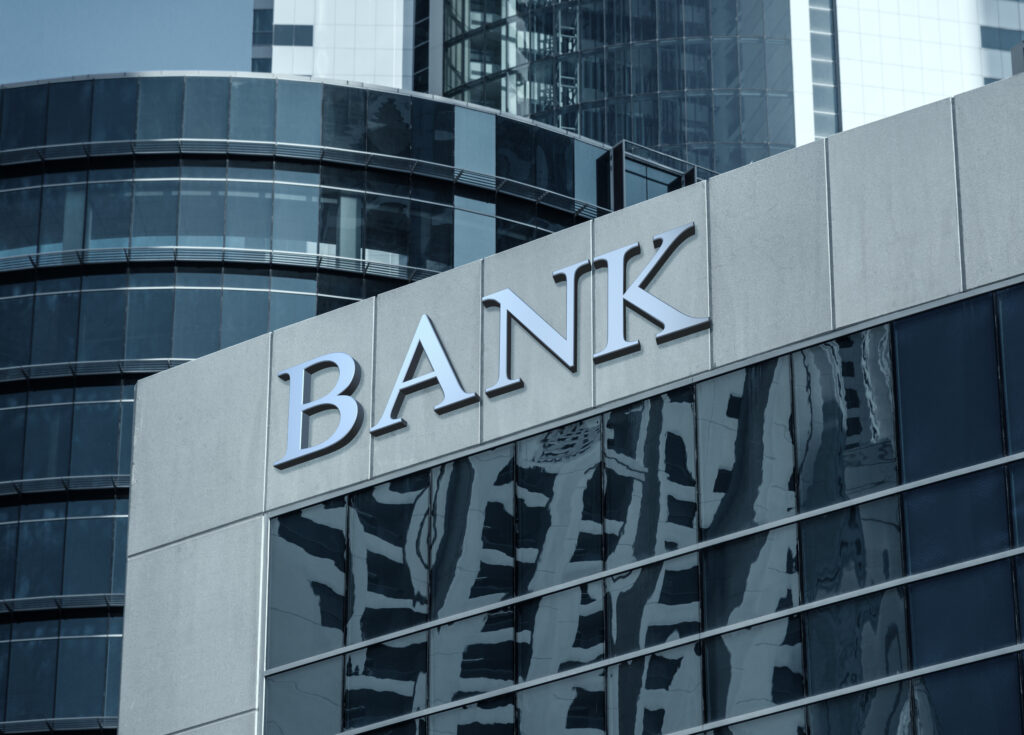Recent Banking Events & What I Know For Sure
March 16, 2023
It’s been about ten months since I started writing these weekly letters to all of you. During most of that time, we have talked at length about the “after shocks” of COVID and the related government stimulus, focusing largely on inflation and the resulting rapid rise in interest rates to offset it. We have talked about ways to position your portfolios in a rising rate environment. We have debated whether or not inflation would roll over. We have discussed the implications of rising rates on personal finance. Never once did it occur to me that I would soon be writing about how the sharp rise in rates would lead to a swift failure of the 16th largest bank – but here we are.

Wait, what just happened?
As you likely know by now, late last week, the FDIC seized Silicon Valley Bank (SVB). (Note: There were also two other bank failures within the last week but my ensuing comments will focus on SVB). The 16th largest bank in the US was once a storied institution, embedded in one of the most consequential industries and geographical areas of the US economy – the technology home base of Silicon Valley in California.
If you haven’t been following the story minute-by-minute as I have, you may be wondering what happened (and how it happened so fast)? I’ll provide a brief recap but I highly recommend this quick podcast from the New York Times, as well as this special episode of Pivot and the ongoing coverage by Semafor, Puck News, New York Times, and Wall Street Journal.
SVB was a very unique banking institution, in large part because of the composition of its client base. Being embedded in Silicon Valley, the bank’s customers were mostly venture capitalists and their portfolio companies. The bank’s fortunes mirrored that of its customers. During the post-COVID euphoria of 2020 and 2021, money flowed into the tech ecosystem driven by 0% interest rates which were supportive of high-growth/long-duration businesses. As tech companies racked in funding, SVB’s deposits skyrocketed. The bank went from having $45 billion in assets in 2015 to $200 billion in 2020.
When banks receive deposits, they either lend those funds or invest the excess in safe-haven assets such as US Treasury securities, allowing the bank to earn more interest on its assets than they pay depositors. As SVB’s deposit growth far outgrew its loan demand, it found itself with a meaningful excess of cash – which it deployed into an investment portfolio. With rates as low as they were in 2020 and 2021, the bank chose to extend the duration of the investments (ie: bought longer dated securities) to earn a bit more interest and show better margins. Everything worked great with this strategy…until the Fed starting raising rates at a breakneck speed just about a year ago.
The rise in rates hit many parts of the economy hard – but it really hurt the start-up and early stage tech ecosystem that banked with SVB. With money no longer being “free” at 0%, investors shifted away from high growth areas and these companies found themselves in need of cash. They turned to SVB for their deposits as a source of funds. In the meantime, rising rates were hammering SVB’s investment portfolio. When rates rise, bond values fall – and this dynamic intensifies the longer the durations (ie: maturity timelines). These trends joined forces and became like a snowball rolling down hill. Three days before the bank was seized, SVB announced they were seeking new capital to add liquidity to the bank to fund deposit withdrawals and stem the losses from a sizeable investment sale.
This announcement rattled markets – and more importantly, it shocked SVB’s depositors – who again, were largely concentrated in an echo chamber of Silicon Valley, a group that tends to move as a herd and is very plugged in/connected to social media and technology. Heads of a few key Venture Capital funds demanded that their portfolio companies move their funds out of the bank – and fast. It was a classic “run on the bank” – instigated over Slack Channels, Zoom rooms, and Twitter and executed instantaneously with a few clicks on thousands of smartphones. On its last day of operations, SVB saw withdrawals of over $42 billion in deposits. The bank couldn’t secure the liquidity it needed to match these withdrawals, resulting in a liquidity crunch that forced the FDIC to take possession.
Over the weekend, after a failed auction to sell the bank, the FDIC remains in control of SVB as of the date this is published. Most consequentially, the FDIC, in connection with Treasury and the Federal Reserve took decisive action to stabilize the banking system within 36 hours of SVB’s collapse. They announced that all depositors at the failed banks, including SVB, would be insured (without limit). Further, the Federal Reserve announced a newly created Bank Term Funding Program (BTFP), which provides liquidity to other banks that might be facing heavy withdrawals, in an effort to prevent a similar rattling of confidence.
What I Know For Sure
As I watched this all unfold over the past several days, I kept thinking about what I wanted to share with you during a time of great uncertainty. I kept coming back to the theme of a weekly column Oprah Winfrey used to write in her O Magazine entitled “what I know for sure.” In a week where I can’t offer many guarantees or certainties, I can at least share with you a few things I know to be true.
1.) The same – and different – The market (and human) reaction in the aftermath of SVB has been “could this happen again? Could this happen at my bank?” That response is natural and very valid. What I know for sure is that SVB was the same as many banks – it borrowed short and lent/invested long. What I also know is SVB had a lot of unique characteristics and practices that made it very different from other banks. Over 94% of its deposits were unisured (over the FDIC limit). As a depositor, if you hear your bank may be in trouble, an insured depositor may not panic as they know they are money good. The opposite is true for uninsured (ie: almost 100% of SVB’s customers). Further, SVB also had almost all of its business in one sector – and one geographic area and ecosystem – as well as most of its customers under the influence/sway of ~50 Venture Capitalists. SVB was the same as most banks in some ways but very different in a few, ultimately detrimental, ways.
2.) Government actions were historic – and necessary – I’ve seen headlines calling the actions taken by the US government another bank bailout. It was not a bailout. No taxpayer funds will be used. Equity and bond holders are likely to lose their entire investment. There is no coverage being provided to them. Instead, what will happen is that the FDIC will attempt to sell the assets of the failed banks to cover the deposits. Any shortfalls will be paid from a FDIC fund, that is comprised of fees banks have paid since 2008. The actions the government took were historic – and had to be taken. They implicitly backstopped all uninsured deposits and resolved the issue of unrealized losses in investments for other banks by allowing them to borrow from the government (without spooking the public as SVB did). I don’t know what things would look like without these actions, but I know for sure this was a far better alternative.
3.) Shockwaves won’t dissipate immediately – markets have continued to swirl this week, with ripple effects seen in other US regional banks and also overseas in Europe. Markets, investors, and citizens are still jittery. Of course they are. Confidence in the banking system had been built over centuries – and was materially deteriorated in a matter of days. I don’t know when things will settle down, but I do know for sure it will take time for that confidence and trust in the system to be rebuilt.
4.) There will be a search for correlations – some right, some wrong – When a bank collapses with such intensity and speed, it is natural for investors to look for the next “shoe to drop.” I know for sure that some of these comparisons are fair and may prove to be accurate. Time will tell. But I also know that likely just as many (if not more) are improper comparisons. The key as a participant in markets (and as management of these companies being improperly judged) is to stay solvent longer than markets remain misinformed and reactive.
5.) We’ve gotten to the other side before – There must be something about March. March 2008, March 2020. Think back to those times and the fear and uncertainty you felt. How it seemed things would never be “normal” again. How you were certain this time would be different. How you felt like it was time to just stop investing. But you kept going. You’ve been here before. You’ve endured this before. You did it then – and I know you can do this now.
6.) Action or inaction – you choose – It is very easy to absorb all this news coverage and ingest the corresponding panic and fear. You may feel compelled to do something, when it seems like everyone else is. You may be tempted to take a news headline at face value. You may be compelled to change your whole approach. What I know for sure is your situation is unique to you. You know what lets you sleep at night. You know what will help you reach your goals. You know yourself. You know what path you are on. Trust in that. Just because everyone else is doing “something” doesn’t mean you have to anything.
7.) You don’t have to do this alone – None of this is easy. It’s natural if your confidence in the banking system and markets as a whole has been shaken. I know for sure that much of the good still remains. Reach out with any questions or if you want to talk about your specific situation.
I realize this has been a challenging week – on top of an already challenging several years. You have every right to be a bit concerned, worried, and fatigued. However, remember that this too shall pass. You have made it thru 100% of your bad days – investing related and otherwise. I know for sure we will make it thru this as well – together.
Onward we go,

Leave a note
Leave a Reply
You must be logged in to post a comment.
In the end taxpayers will pay. Banks will be pushing increased FDIC premiums on to customer. Who does not pass forced cost increases on?
Had the Bank Term Funding Program created by the Fed AFTER the SVB collapse been in place a week before the SVB collapse, SVB would not have failed. So with this program, you can ask yourself how many banks will be saved, that otherwise would have failed. And then ask yourself if that is a good thing.